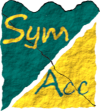Thinking about the universe has been an old trade of humanity. Our perception and approach to the world have been changing as we evolve through ages and so has our understanding of the universe.
Today we believe that we live in a dynamic Universe, whose geometry keeps changing as the type of overall matter (such as light or dust or some fields) in it keep changing. Modern Cosmology studies the history of the Universe in terms of the epochs shown in the figure.
We rely on Mathematics, Physical principles, simulations and observations to study this picture in more and more detail.
But how did we, as humanity, reach this understanding?
. A lot of the initial questions about the Universe focused on the positioning of earth, the moon, the sun and a few other planets and stars with respect to each other. Where can you place all these celestial objects?
- The metal ornament in the photo is the depiction of the Universe around 2BC in the ancient kingdom of Urartu, in the eastern Caucasians. The earth is at the bottom, surrounded by a sphere for water and a sphere for the atmosphere with Mercury, Mars, Jupiter, Saturn and the Moon lined up between the Earth and the Sun.
- By the 2nd century AD, one of the conventional pictures of the universe was the Ptolemaic system with the Earth at the center of the Universe and the rest of the planets and stars going around in different circles.
- After the 16th century, with the works of Copernicus the Earth was no longer thought to be at the center of the Universe, new systems of spheres for the planets to move around were developed by Brahe and others.
The ornament and the drawings in figures are all models. They try to explain the observed motion of planets in simple terms as much as possible. In these examples the models are depicted in figurative terms.



